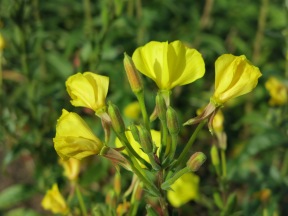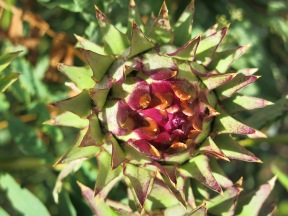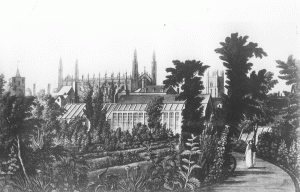 Botanic Gardens and university education have a long interconnected history. The raison d’être of a Botanic Garden – as opposed to a park or pleasure garden – is that in a Botanic Garden plant collections are identified, labelled and studied. Modern botanic gardens developed from European physic gardens and were devised to supply medicinal herbs and plants to those studying the emerging science. These early physic gardens went hand-in-scalpel with the development of modern medicine and surgery. During the seventeenth century, Britain’s first physic garden was founded at Oxford in 1621. This was followed by Chelsea Physic Garden, known as the ‘Garden of the Society of Apothecaries’, in 1673. Cambridge University’s own physic garden, was inspired by Chelsea and founded in 1762 for use by student physicians studying at the University.
Botanic Gardens and university education have a long interconnected history. The raison d’être of a Botanic Garden – as opposed to a park or pleasure garden – is that in a Botanic Garden plant collections are identified, labelled and studied. Modern botanic gardens developed from European physic gardens and were devised to supply medicinal herbs and plants to those studying the emerging science. These early physic gardens went hand-in-scalpel with the development of modern medicine and surgery. During the seventeenth century, Britain’s first physic garden was founded at Oxford in 1621. This was followed by Chelsea Physic Garden, known as the ‘Garden of the Society of Apothecaries’, in 1673. Cambridge University’s own physic garden, was inspired by Chelsea and founded in 1762 for use by student physicians studying at the University.
 By the early 19th-century, the small city centre garden had been outgrown and its scientific focus had shifted. A new 38-acres site was selected by the then Professor of Botany John Stevens Henslow (1825 – 1861) (pictured left) at Cambridge. This ‘New Botanic Garden’ reflected the development in the new discipline of botany (plant sciences) during that period. The New Botanic Garden was developed in two phases – in the mid-19th century and the mid-20th century – and echoes the shifting philosophy and approach to plants and the environment.
By the early 19th-century, the small city centre garden had been outgrown and its scientific focus had shifted. A new 38-acres site was selected by the then Professor of Botany John Stevens Henslow (1825 – 1861) (pictured left) at Cambridge. This ‘New Botanic Garden’ reflected the development in the new discipline of botany (plant sciences) during that period. The New Botanic Garden was developed in two phases – in the mid-19th century and the mid-20th century – and echoes the shifting philosophy and approach to plants and the environment.
There are still connections between the Cambridge University Botanic Garden and plants grown for their active medicinal properties through the plant science facilities and experimental beds, as well as public displays such as ‘Healthy Herbie’. This latter planting was created in 2002 to educate the public about plant diversity, sustainability and conservation as well as plants with medicinal properties. Pharmacological plants are arranged in a person-shaped display in association with different parts of the body. For example, willow bark, which contains salicylic acid – an active ingredient in aspirin – grows in Herbie’s head.
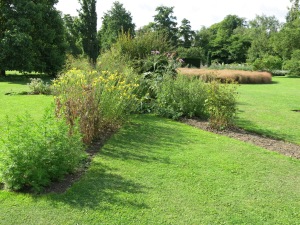
Healthy Herbie is planted with shrubs and flowering plants that contain active medical ingredients used in today’s pharmaceuticals. Plants such as Evening Primrose, Oenothera biennia (below left) and Globe artichokes, whose leaves are used in treatments for liver, kidney and gall bladder.
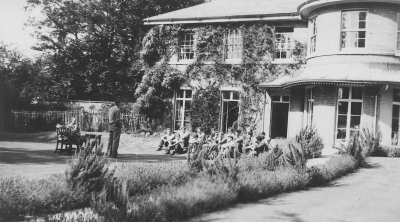 Teaching students in front of Brookside in the 1950s. Today, undergraduate students from the Department of Plant Sciences are still taught plant systematics in the Garden.
Teaching students in front of Brookside in the 1950s. Today, undergraduate students from the Department of Plant Sciences are still taught plant systematics in the Garden.
Today, in addition to being a sub-department of the University’s Department of Plant Sciences, the Botanic Garden’s own education department runs an active programmes of talks, courses, workshops and activities throughout the year. These include school and educational visits, family activities, as well as adult courses on both horticultural and creative subjects. This article is from the Connecting with Connections blog, 2013.
See Technology and the Garden to see how technology has changed working practices. What is a Botanic Garden?, Technology and the Garden, The Changing Role of the Garden, The Unbuilt Garden

